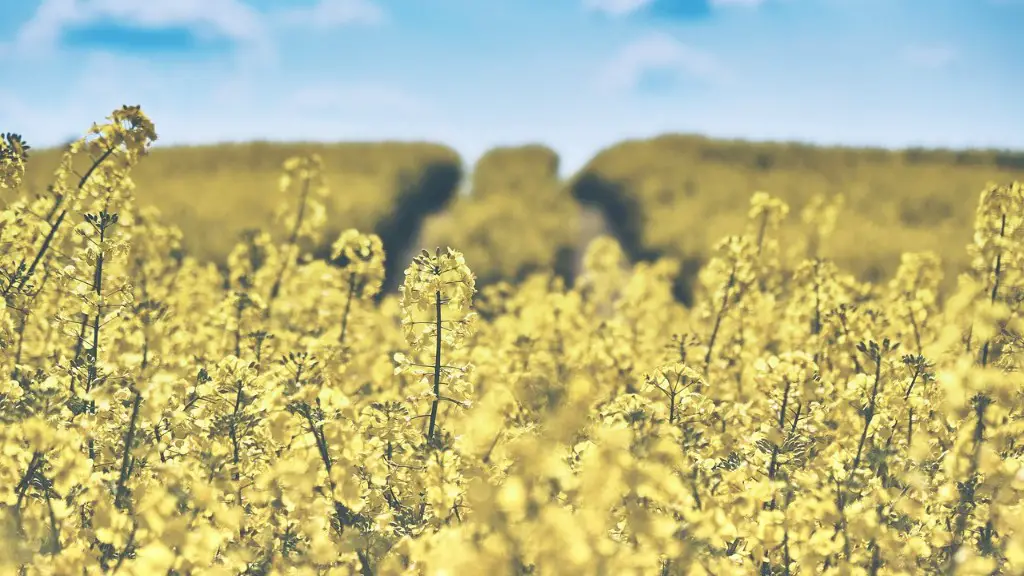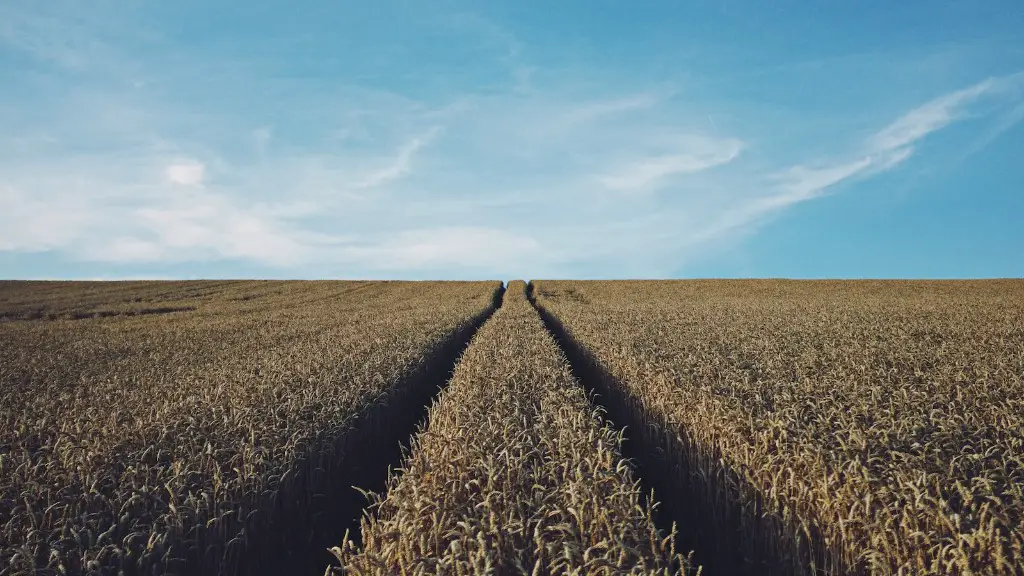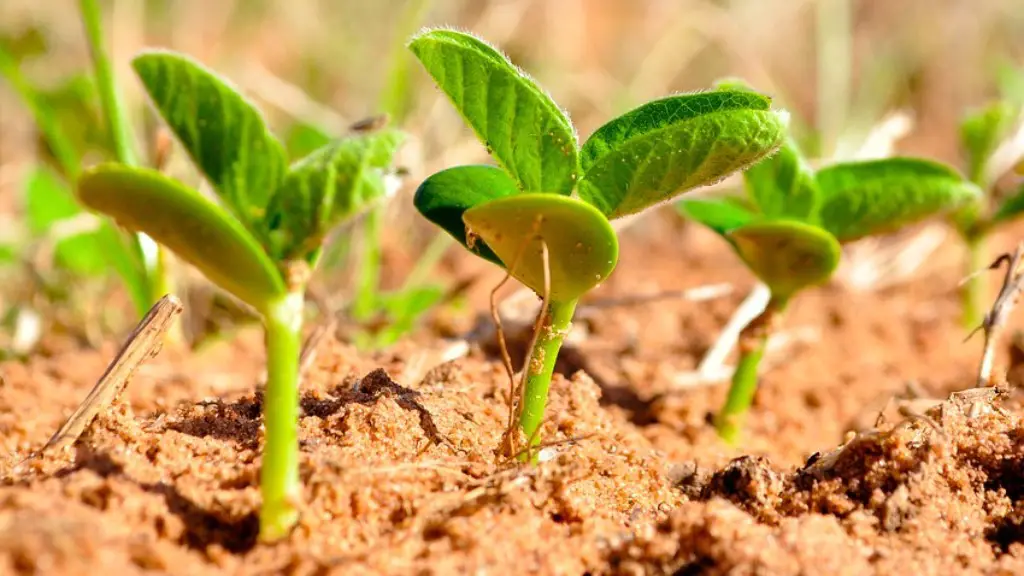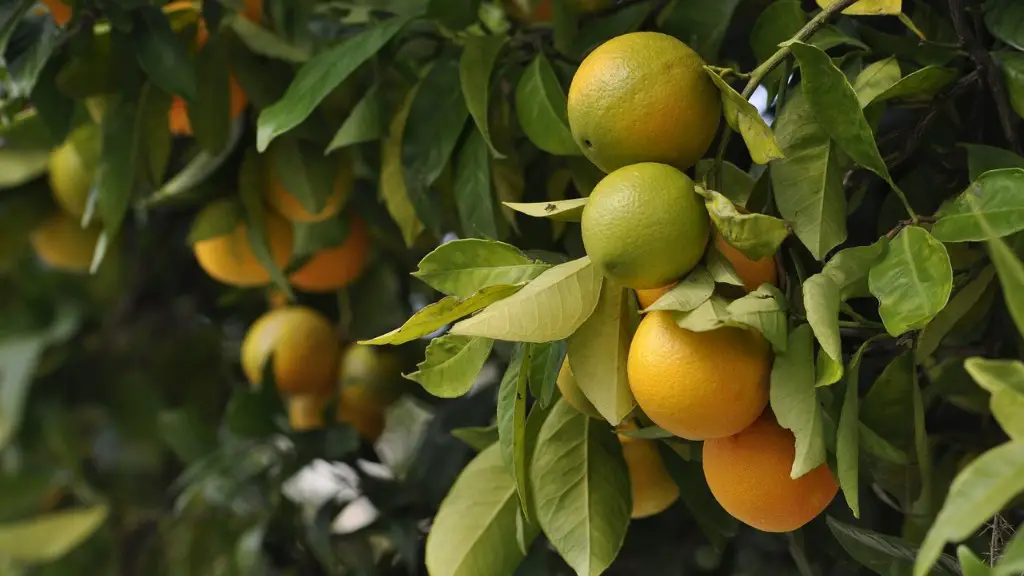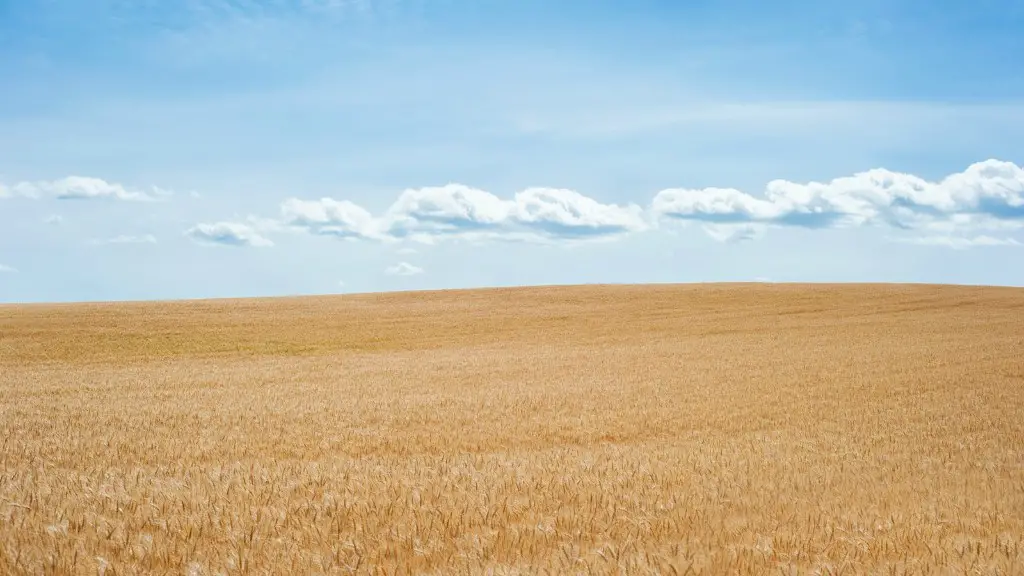The agriculture industry is vital to the economy and food security of any country. Without agriculture, a country would be unable to feed its population and would have to import food from other countries. Agriculture is also a major source of employment in many countries.
There are several ways to support agriculture. One way is to buy locally grown food. This supports farmers in your area and helps to keep your food dollars within the local economy. Another way to support agriculture is to get involved in the industry. This can be done by becoming a farmer, working in an agricultural business, or working for a government agency that supports agriculture.
Agriculture is the process of producing food, feed, fiber and other desired products by the cultivation of certain plants and the raising of domesticated animals.
The primary ways to support agriculture are through government policies and initiatives, as well as through public and private funding. Government support can take the form of subsidies, tax breaks, infrastructure development and research and development initiatives. Public and private funding is often used to support the development and adoption of new technologies, as well as to help farmers access markets. Other ways to support agriculture include promoting environmentally sustainable practices, ensuring food safety and security, and improving working conditions for farmers and other agricultural workers.
How can we support local agriculture?
A CSA share is a great way to get fresh, locally-grown produce each week during the growing season. You can sign up for a share at a farmers market or through a home delivery service.
1. Start your own garden and raise your own chickens for eggs. This way you know exactly where your food is coming from and how it was raised.
2. Make your own organic soil. This ensures that your food is grown in healthy soil without any chemicals.
3. Eat local and organic. This supports sustainable farmers in your area and cuts down on transportation emissions.
4. Close the loop. Compost your food scraps and use them to fertilize your garden.
5. Join a local food club. This is a great way to meet like-minded people and learn about sustainable food options in your area.
6. Eat less meat, more veggies. Meat production is a major contributor to greenhouse gas emissions. Reducing your meat consumption is a great way to help the environment.
7. Involve children. Sustainable food options are a great way to teach children about where their food comes from and how it affects the environment.
8. Volunteer with a sustainable farm or food justice organization. This is a great way to get involved in the sustainable food movement and help make a difference.
9. Spread the word. Talk to your friends and family about sustainable food options and why they are important
How can we solve agriculture
Climate change, soil erosion, and biodiversity loss are just some of the many challenges farmers face today. They must also contend with consumers’ changing tastes and expectations, as well as rising demand for more food of higher quality. To meet these challenges, farmers need to invest in farm productivity and adopt new technologies.
There are a few ways to make agriculture more efficient and reduce the amount of strategic planning that goes into farming.
1. Improve irrigation techniques so that plants get the water they need to survive without using too much water.
2. Use high quality seeds that are more resistant to pests and disease.
3. Better monitoring technology so that farmers can more easily track the health of their plants and soil.
4. Green methods of pest control that are less harmful to the environment.
5. Cover cropping to improve soil health and reduce erosion.
6. Use organic fertilizers that are less likely to harm the environment.
7. Intercropping or polyculture to grow multiple crops in the same space.
Why do we need to support agriculture?
It is important to protect farmers as they are the backbone of our food system. They provide us with fresh, nutritious food and are often at the mercy of the weather and market conditions. By advocating for farmers and raising awareness about their conditions, we can help strengthen our community and influence policy makers to enact more farmer-friendly laws and regulations.
The main components of both sustainable farming and conventional farming are exactly the same: soil management, crop management, water management, disease/pest management and waste management. However, the approach and philosophy of these two types of farming are very different. Sustainable farming is an environmentally friendly approach that seeks to minimize the impact of farming on the environment. This is achieved through practices such as using organic fertilizers, using crop rotation to improve soil health, and using sustainable irrigation methods. In contrast, conventional farming is focused on maximizing production and profits, often at the expense of the environment. This can result in practices such as heavy use of chemical fertilizers and pesticides, monoculture planting, and over- irrigation.
How can farmers be more sustainable?
Erosion control is the practice of preventing or mitigating the effects of erosion by water, wind, or other agents. Planting cover crops, adding organic matter, and carefully investigating the potential long-term impacts on the soil and soil life when applying agricultural products to the soil are all ways to protect and build soil. These practices are necessary to grow good crops and leave productive land for future generations.
Sustainable agriculture is a promising approach to reducing the inputs of external energy and substituting renewable sources for non-renewable sources. Solar and wind power, for example, can provide renewable energy to power agricultural equipment, and biofuels made from agricultural waste can help to reduce the reliance on fossil fuels. Where economically feasible, sustainable agriculture also relies on animal or human labor, which can help to further reduce the reliance on external energy inputs.
What 5 things can we do to improve agriculture
Increasing agricultural productivity is essential to meeting the needs of a growing population. There are several ways to achieve this, including developing high-yield crops, boosting irrigation, increasing the use of fertilizers, and improving market access, regulations, and governance. Additionally, making better use of information technology and adopting genetically modified (GM) crops can help to further increase productivity. Reforms to land ownership, with a focus on productivity and inclusiveness, are also needed to help achieve sustainable increases in agricultural productivity.
There are many issues and challenges facing agriculture today, from local to national levels. Here are ten steps you can take to advocate for agriculture:
1. Define important issues or challenges agriculture is facing locally, in your state or nationally.
2. Research and analyze statistics about agriculture in your area, your state or the nation.
3. Decide who you are trying to influence.
4. Determine what you want to accomplish.
5. Develop a clear and concise message.
6. Choose the best channels to reach your target audience.
7. Stay up to date on developments in the agriculture industry.
8. Be prepared to answer tough questions.
9. Be persistent and consistent in your advocacy.
10. Celebrate your successes and learn from your failures.
How can we prevent agricultural problems?
There are various reasons for the farm distress in India. Some of the reasons are listed below:
1) Increasing incomes: One of the key ways to reduce farm distress is by increasing incomes. This can be done by ensuring that farmers get better prices for their produce, providing them with adequate credit and insurance, and investing in agricultural infrastructure.
2) Agricultural transformation: Another way to reduce farm distress is by promoting agricultural transformation. This can be done by investing in research and development, encouraging the use of new technologies, and providing support for farmers to switch to more profitable crops.
3) Generating employment opportunities: Another way to reduce farm distress is by generating employment opportunities in rural areas. This can be done by setting up industries and businesses in rural areas, and providing training and support for farmers to start their own enterprises.
4) Reducing risks in agriculture: Another way to reduce farm distress is by reducing risks in agriculture. This can be done by providing insurance and credit services to farmers, and investing in irrigation and other infrastructure.
5) Improving quality of rural life: Another way to reduce farm distress is by improving the quality of rural life. This can be done by investing in education and health care, and providing support
The youth of today are the future of agriculture. It is therefore important to mobilize information and communications technologies (ICT) and social media to promote and inform the youth of what agriculture is and what a career in agriculture could look like. This will be beneficial for the industry as a whole, as it will help to ensure that the youth are well-informed about the potential opportunities available to them in the agricultural sector.
What are 3 reasons why agriculture is important
Agriculture is the backbone of civilization and it has been so since the dawn of humankind. It is the process of cultivation of plants and animals for food, fiber, fuel, and other products used to support human life. Here are 10 reasons why agriculture is important:
#1 It’s the main source of raw materials: Agriculture is the main source of raw materials for industries. The textile industry, for instance, depends on agricultural products like cotton and jute.
#2 It’s important to international trade: Agriculture is important to international trade because many countries export agricultural products. For instance, France is known for its wines and cheese, and the Netherlands is known for its flowers.
#3 It plays a big role in a nation’s revenue: Agriculture plays a big role in a nation’s revenue. In the United States, for instance, agriculture accounts for about 1% of the Gross Domestic Product (GDP).
#4 It provides employment: Agriculture provides employment to a large section of the population, especially in developing countries. In India, for instance, about 54% of the workforce is employed in agriculture.
#5 It’s crucial to a country’s development: Agriculture is crucial to a country
Agriculture is the backbone of most ecosystems and the key to a healthy environment. The way we manage our land, water, and soil has a direct impact on the health of biodiversity. By increasing biodiversity, we can create a healthier environment for all.
What are the 3 P’s of sustainable agriculture?
The triple bottom line is a popular framework for thinking about sustainability. It captures the idea that environmental, social, and financial considerations are all important when making decisions about whether something is sustainable.
There are many different ways of thinking about and operationalizing the triple bottom line. One popular approach is to think about the three Ps: people, planet, and profits. This approach emphasizes the importance of considering how our actions affect people and the environment, as well as whether they are financially sustainable.
The triple bottom line is a popular framework for thinking about sustainability, but it is far from the only one. There are many different ways of thinking about and operationalizing sustainability, and the three Ps approach is just one of many.
There are a number of sustainable agriculture methods and farming practices that can be used in order to produce food in a more environmentally-friendly way. Permaculture is one such method, which involves using natural systems and resources in order to create a self-sustaining ecosystem. Biodynamic farming is another sustainable method, which uses organic materials and regenerative principles to create a more balanced and healthy ecosystem. Hydroponics and aquaponics are also sustainable methods of agriculture that can be used to grow crops in an urban environment. Finally, agroforestry and food forests are two more sustainable methods of farming that focus on creating a more efficient and sustainable use of land and resources.
What impact does agriculture have on human society
Agriculture impacts society in a number of positive ways. It supports livelihoods by providing food and habitat, and it also provides raw materials for a variety of food and other products. In addition, agriculture can help to build strong economies through trade.
Carbon sequestration is the process of capturing and storing atmospheric carbon dioxide. This can be accomplished through a variety of means, such as reducing tillage, using cover crops, and increasing soil biodiversity. Once a farm is able to store more carbon than they lose, the sequestered carbon can be sold as “Carbon Credits.”
Warp Up
There are a few key ways to support agriculture:
1. Buy local produce whenever possible – this ensures that your money is going directly to farmers and supporting their business.
2. Join a CSA (Community Supported Agriculture) – this is a great way to directly support a specific farm and receive fresh produce all season long.
3. Vote with your wallet – choose to purchase products that have been responsibly sourced and that support sustainable agriculture practices.
4. Get involved – support organizations and initiatives that are working to improve the agricultural industry.
Agriculture is the backbone of most economies and ensuring its continued success is vital to global food security. There are many ways to support agriculture, including by providing financial assistance, improving infrastructure, and investing in research and development. By working together, we can ensure that agriculture thrives for years to come.
